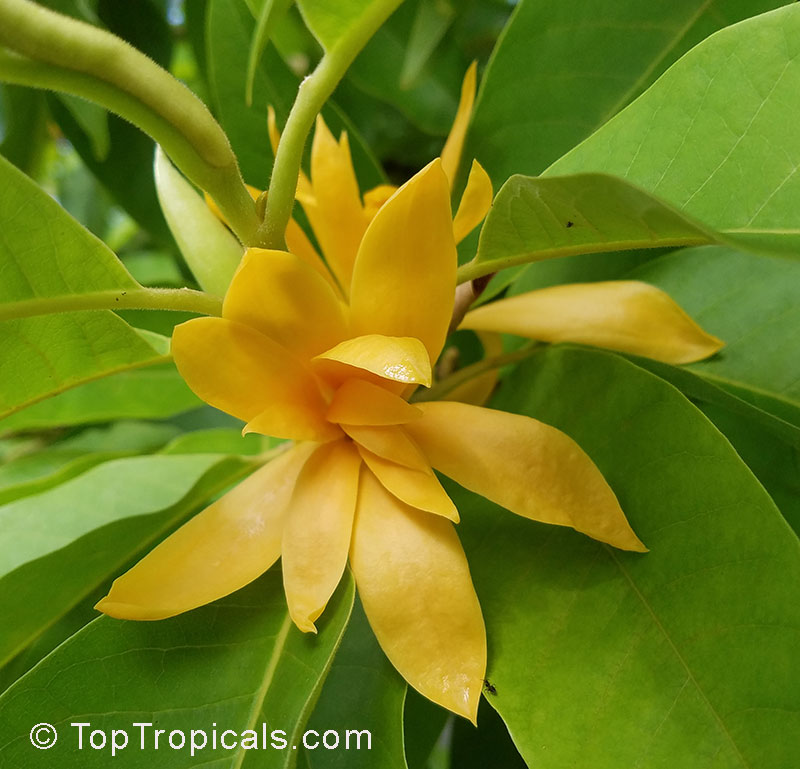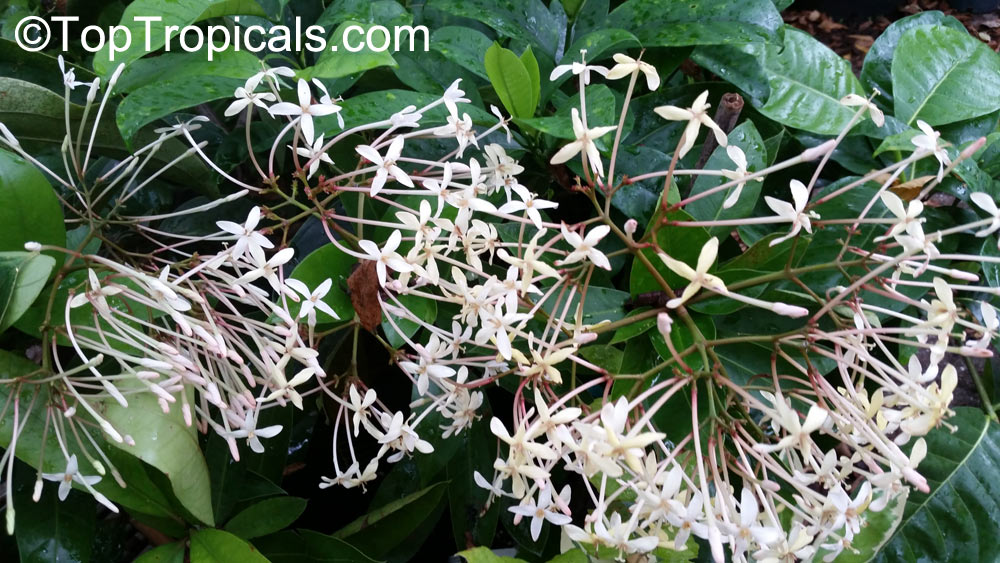Garden Blog - Top Tropicals
What is the flower of the most expensive perfume?
Champaka, Joy Perfume Tree - Magnolia (Michelia) champaca
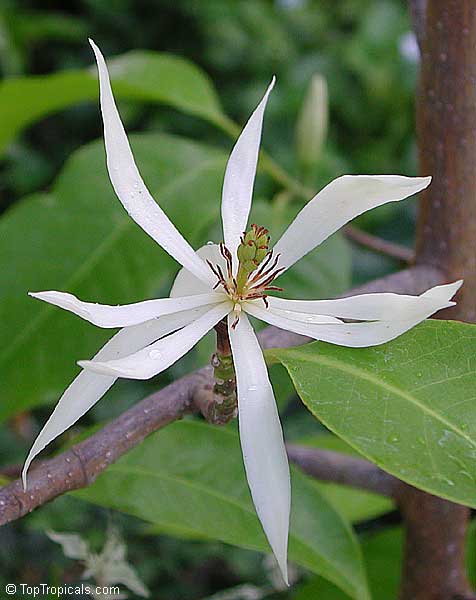
Champaka, Joy Perfume Tree - Magnolia (Michelia) champaca - white flower Alba
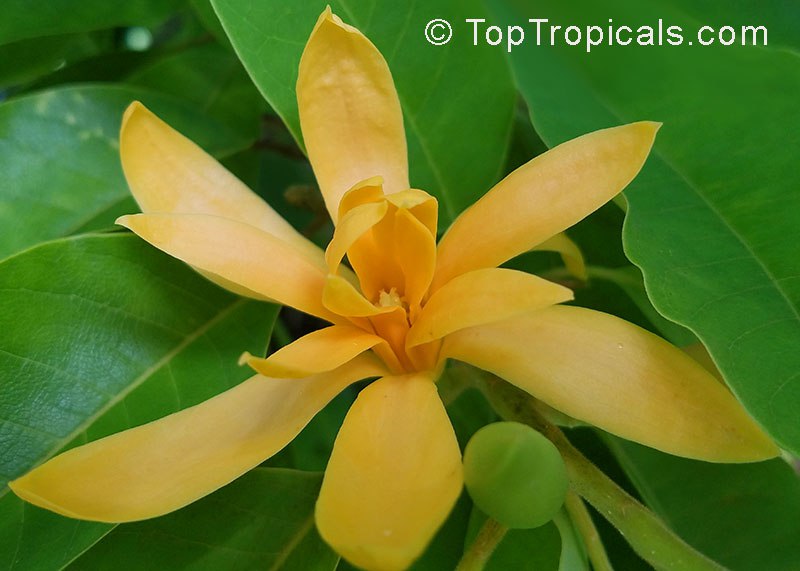
Champaka, Joy Perfume Tree - Magnolia (Michelia) champaca

Champaka, Joy Perfume Tree - Magnolia (Michelia) champaca
The flowers from this tree - Magnolia (Michelia) champaca - are used to make the world's most expensive perfume 'Joy' and smell like fruity bubble gum 🎀... you can't stop sticking your nose in this flower!
👼 Sacred tree of India and SE Asia
flowers exude a divine fragrance that is exceedingly pleasing to the Gods... and women
🌳 Perfect small landscape tree of a columnar shape. Ideal for containers.
🌡 Relatively cold hardy
💎 Rare collectible, a gem of any plant collection!
📚 Learn more about Champaka
🛒 Shop Champaka - Joy Perfume Tree
#Perfume_Plants #Fun_Facts #Container_Garden #Trees
🏵 TopTropicals
Six most desired perfume plants

Cananga fruticosa - Dwarf Ylang-Ylang, Chanel No 5 Tree

Magnolia (Michelia) champaca - Joy Perfume Tree, Champaka
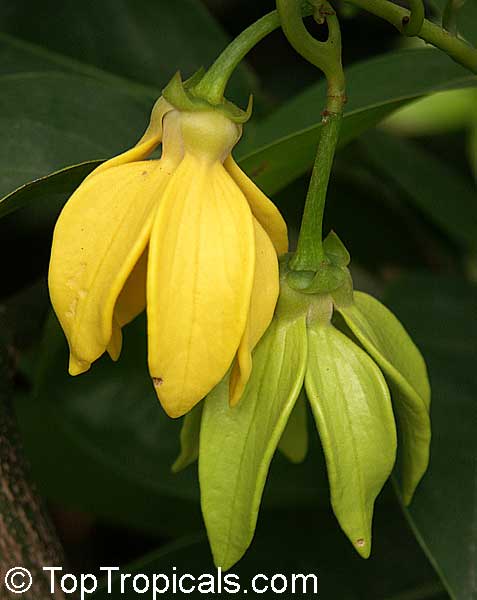
Artabotrys - Ylang Ylang vine
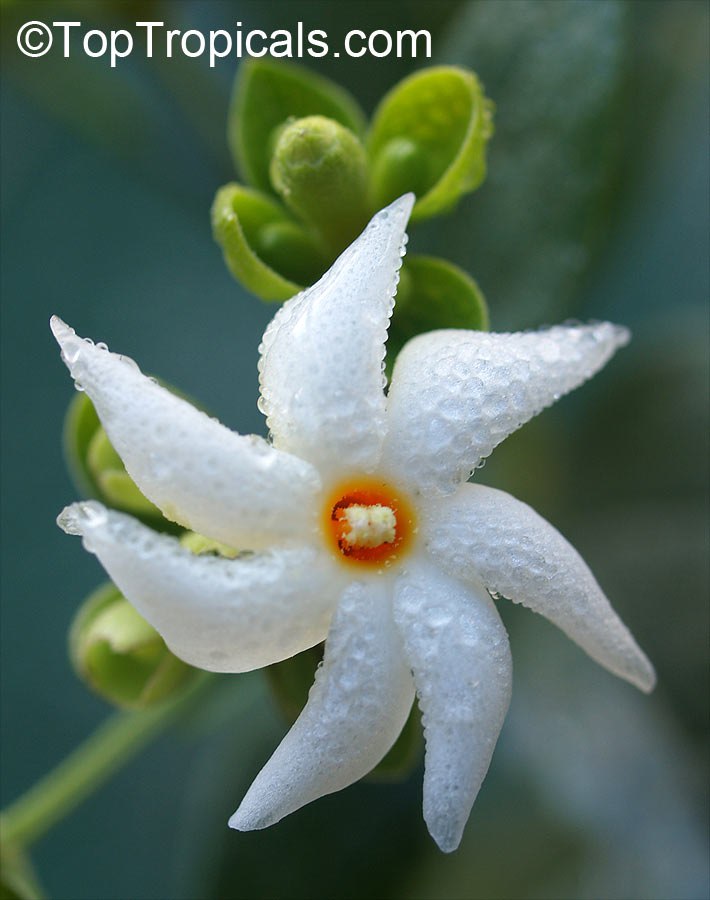
Nyctanthes arbor-tristis - Parijat

Jasminum sambac Grand Duke
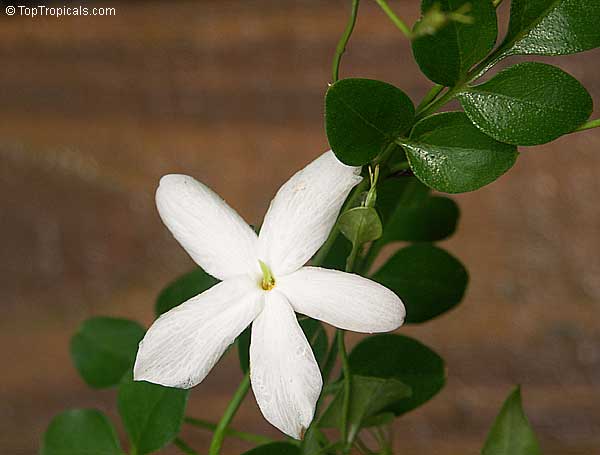
Jasminum officinale - French Perfume Jasmine
- 🕊 Cananga fruticosa - Dwarf Ylang-Ylang, Chanel No 5 Tree. One of the most desired and sought after rare fragrant plants. Elegant flowers are responsible for creation Chanel #5 perfume. Perfect small tree for a container.
- 🕊 Magnolia (Michelia) champaca - Joy Perfume Tree, Champaka. The most sacred tree of India and tropical Asia. Divine fragrance exceedingly pleasing to the Gods... The flowers are used to make the world's most expensive perfume 'Joy' and smell like fruity bubble gum, you can't stop sticking your nose in this flower!
- 🕊 Artabotrys - Ylang Ylang vine - Woody climber with strong fragrance of flowers resembling lemon candy and melon.
- 🕊 Nyctanthes arbor-tristis - Parijat. Small tree or shrub from India with highly perfumed flowers, one of the most desired fragrant plants. Mythology says the plant came to earth with God Krishna, shedding flowers like tears before dawn.
- 🕊 Jasminum sambac - the most popular and the most fragrant Jasmine for both indoor or outdoor culture. Varieties: Arabian Nights, Belle of India, Mangalore Malli, Grand Duke, Grand Duke Supreme, Gundu Malli, Maid of Orleans, Mali Chat, Mysore Mulli, Little Duke Supreme - Baby Duke.
- 🕊 Jasminum officinale - French Perfume Jasmine - Essential oil of this jasmine is one of the most important components in perfumery.
🛒 Shop fragrant plants
#Perfume_Plants
🔴 Join 👉 TopTropicals
Why Champaka tree is such a popular perfume tree
Joy Perfume tree - Magnolia (Michelia) champaca
- 🏵 The flowers from Champaka, or Joy Perfume tree (Magnolia (Michelia) champaca) - are used to make the world's most expensive perfume 'Joy' and smell like fruity bubble gum... you can't stop sticking your nose in this flower!
- 🏵 Sacred tree of India and SE Asia. The flowers exude a divine fragrance that is exceedingly pleasing to the Gods... and women.
- 🏵 The tree is very compact for both landscapes and containers. It has bushy, yet columnar shape. Can be grown in container with minimal pruning.
- 🏵 Blooms on and off several times a year. Relatively cold hardy, but requires regular watering.
🎥 Yellow Champaka in bloom. This tree is 3 years old.
📚 Learn more from previous posts:
Flower of the most expensive perfume
White Champaka
Article about Champaka
🛒 Shop Champaka - Joy Perfume Tree
#Perfume_Plants #Fun_Facts #Container_Garden #Trees
🔴 Join 👉 TopTropicals
When does Champaka tree start blooming?
Joy Perfume tree (Magnolia champaca) flowers
- 🏵 Champaka, or Joy Perfume tree (Magnolia champaca) blooms in and off year around. This year it's the third time we see our trees with flowers.
- 🏵 The flowers are used to make the world's most expensive perfume 'Joy' and smell like fruity bubble gum... you can't stop sticking your nose in this flower!
🎥 Yellow Champaka in bloom. This tree is 3 years old.
📚 Learn more from previous posts:
- 🟡Why Champaka is such a popular perfume tree
- 🟡Flower of the most expensive perfume
- 🟡White Champaka
- 🟡Article about Champaka
🛒 Shop Champaka - Joy Perfume Tree
#Perfume_Plants #Container_Garden #Trees
🔴 Join 👉 TopTropicals
Date:
Champaka - a true Joy of your life
by Alex Butova, the Witch of Herbs and Cats
...Champaka, or Joy Perfume Tree, is regarded as one of the most sacred
trees of India and tropical Asia. Its flowers exude a divine fragrance that
is exceedingly pleasing to the Gods... and women!..
...The tree was traditionally used to make fragrant hair and massage oils.
Jean Patou's famous perfume, 'Joy', the second bestselling perfume in the world after Chanel No. 5, (but definitely the most expensive number one!) is derived from the essential oils of champaka flowers. The plant common name "Joy Perfume Tree" comes from this perfume. Many niche perfumers are now once again using Champaka Absolute as single note fragrances...
Planting a Golden Champaka really makes your home a sweet home. Also you
can take the flower into your car, office, restroom, and anywhere you want to
create fragrant atmosphere. It emits a unique warm fragrance which promotes a
peaceful state of mind, reduces stress and helps you to relax and breathe
easily. Looks like it is specially designed for moments of tranquil
contemplation. It's the nature of Champaka - to remind us of the Divine in all
things...
CONTINUE READING >>
Tired of an ugly hedge? Replace it with Aglaia - Chinese Rice Flower, and enjoy Lemony Fragrance year around!
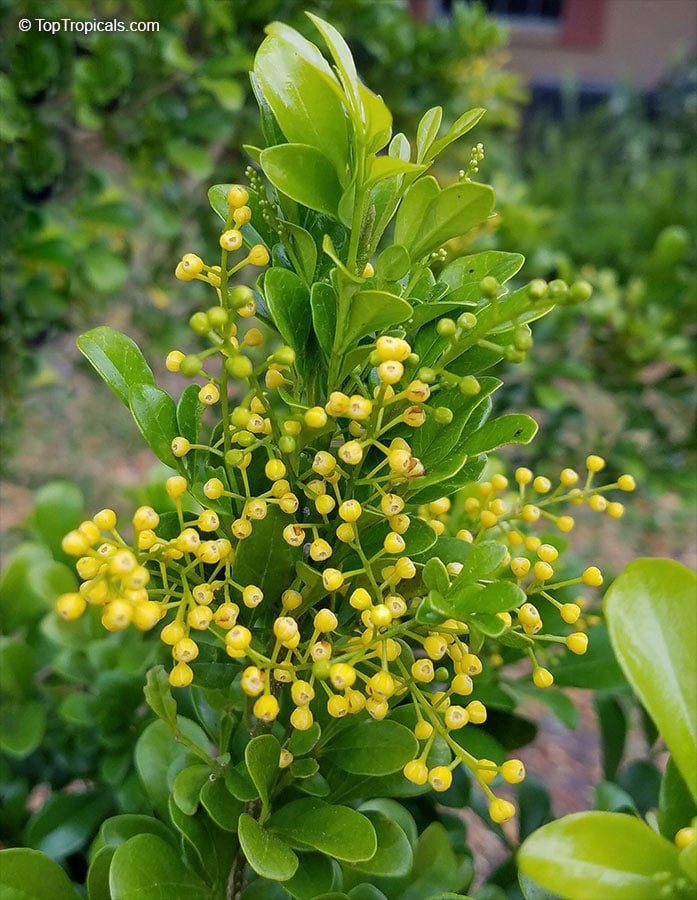
Aglaia odorata - Chinese Perfume Plant flowers

Aglaia odorata - Chinese Perfume Plant
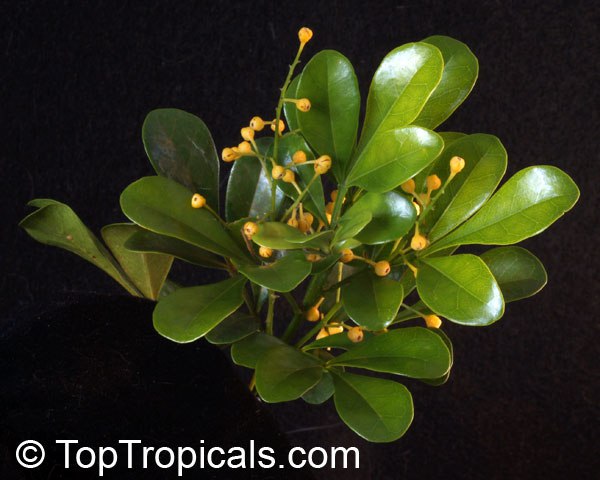
Aglaia odorata - Chinese Perfume Plant

Aglaia odorata - Chinese Perfume Plant hedge
- 🟡 Aglaia odorata is also known as Chinese Perfume Plant, Chinese Rice Flower, or Mock Lemon.
- 🟡 The plant has an outstanding fragrance from tiny, rice-sized yellow flowers.
- 🟡 Aglaia grows into a dense bush without pruning. It is relatively slow-growing; so large plants are rare and hard to find.
- 🟡 Easy to grow bush, it is perfect for a cold tolerant tropical hedge.
- 🟡 Aglaia has many medicinal uses; contains odorine and odorinol, which have cancer chemopreventive activity.
🛒 Get a few bushes of Aglaia for lemony-fragrant hedge
#Perfume_Plants #Hedges_with_benefits #Remedies
🏵 TopTropicals
Date:
Ixora odorata - exclusive flower with fine perfume
Q: I see you have a very special plant - Ixora odorata with fragrant flowers, I've heard that the fragrance is heavenly. Is it easy to grow? Can I plant it as a hedge, like a regular ixora bush?
A: Indeed, Ixora odorata is quite special. It's a must-have for any tropical plant enthusiast, often likened to esteemed fragrance collectibles like Ylang Ylang or the Joy Perfume Tree. While it shares the genus with the common Southern landscape plant, Ixora, cultivating Ixora odorata requires some special attention. We wouldn't recommend using this rare exotic as a hedge; it's best suited as a centerpiece or specimen in your garden. The effort is certainly rewarded, as the sweet fragrance of its flowers is truly remarkable, reminiscent of Jasmines. Here are some tips for growing Ixora odorata:
1. Temperature. Ixora odorata is sensitive to cold and can't withstand even light frost. Protect it by growing it in a container that can easily be brought indoors during cold weather.
2. Soil. Like all ixoras, Ixora odorata prefers acidic soil. This is easily achieved since it's typically grown in a pot. High-quality potting soil, such as Sunshine Abundance, tends to have a lower pH (acidic), has low pH (acidic).
3. Light. Unlike most ixoras, Ixora odorata prefers shade to filtered sunlight, unlike most ixoras that are full sun plants.
4. Water. Ixora odorata prefers drier conditions during winter, so reduce watering in the winter months. In summer, regular watering is necessary, as it won't tolerate drying out.
5. Insect control. Ixora odorata can be susceptible to insects during winter. Keep an eye out for mealybugs during winter. Monitor the leaves, especially underneath.
5. Prune after flowering.
6. Fertilizer. Feed Ixora odorata with Sunshine Boosters Megaflor for most profule flowering and healthy waxy leaves.
Ixora odorata blooms in winter, making it a delightful addition to your home during the colder months. What can be better having this perfume factory! It's a true gem that's worth the extra care and attention - it deserves to be pampered!
We bring our Ixora odorata indoors during winter. It is happy to sit in a large bathtub with a skylight above it. It flowers all winter long, filling the air with light perfume not only in the bathroom and bedroom, but in the whole house. And of course, cats love it too!
What is the Jasmine Oil made of?
French Perfume Jasmine, Poets jasmine (Jasminum officinale)
- 🌞 French Perfume Jasmine, or Poets jasmine (Jasminum officinale) is the most popular jasmine in the world as it is the source of the original Jasmine essential oil.
- 🌞 There are two varieties - with single flower (Jasminum x grandiflorum - it has larger size flower and is more rare) and double flower ( Jasminum officinale Flore Pleno). They are very hard to tell apart when not in bloom as the leaves look the same, but the flowers differ (see video).
- 🌞 Essential oil of this jasmine is one of the most important components in perfumery.
- 🌞 Grown in the perfume fields of Southern France.
- 🌞 Semi-evergreen to deciduous vine with lots of fragrant white flowers in spring, summer, and fall.
- 🌞 Drought tolerant and hardy, it has good tolerance to a wide range of temperatures and is easily maintained in pots.
- 🌞 Jasmine associates nicely with climbing roses, honeysuckle or clematis, but it looks superb grown on its own.
🎥 The difference between the double and single flower varieties.
🛒 Shop French Perfume Jasmine
#Hedges_with_benefits #Perfume_Plants
🔴 Join 👉 TopTropicals
What is the best perfume tree for container culture? Dwarf Chanel No 5 Tree

Cananga fruticosa - Dwarf Ylang-Ylang, Chanel No5 Tree

Cananga fruticosa - Dwarf Ylang-Ylang, Chanel No5 Tree
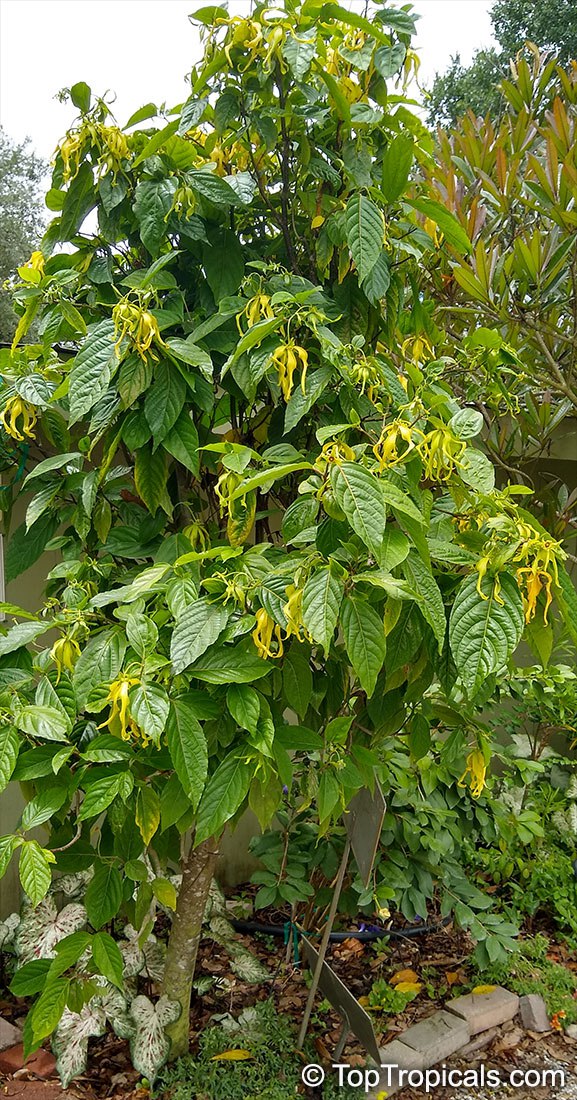
Cananga fruticosa - Dwarf Ylang-Ylang, Chanel No5 Tree

Cananga fruticosa - Dwarf Ylang-Ylang, Chanel No5 Tree
Cananga fruticosa - Dwarf Ylang-Ylang, or Chanel No5 Tree - is the most desired and sought after perfume plants.
- 🔅 Elegant pendant flowers are a piece of art.
- 🔅 Easy to grow, stays compact and in nice tree-like shape. Flowers smell as great as full size Ylang Ylang tree.
- 🔅 Needs warm and humid conditions for a full aroma.
- 🔅 Perfect container plantand a house plant, but keep in mind it requires bright light for profuse flowering.
📚 Learn more about Chanel No5 Ylang Ylang Tree
🛒 Order online
#Perfume_Plants #Container_Garden #Trees
🏵 TopTropicals
Date:
Discover 10
best fruit trees to grow
in Florida and Southern landscapes
Q: We recently moved into our new home in Florida, and the property is a great size - 5 acres - but it currently has no trees, just a few palms. I'm looking to plant some productive fruit trees to start building our own Food Forest. What fruit trees would you recommend as a good starting point?
A: With five acres of space, you have a fantastic opportunity to create a fruitful garden that can provide for your family for many years to come. Below are our top recommendations for must-have, easy-to-grow fruit trees that thrive in Florida's climate, grow quickly, and start producing right away.
1. Mango Tree
Mango trees (Mangifera indica) are a must-have for any Florida garden, embodying the essence of the Sunshine State with their delicious and nutritious fruit packed with vitamins and fiber. These fast-growing, low-maintenance trees thrive with minimal water and are heat-tolerant. Grafted varieties produce high-quality, fiberless fruit in just 2-3 years, while dwarf "condo" mangoes are perfect for smaller spaces or containers. While young trees need frost protection, mature trees handle cold better. Grafted mangoes offer rich taste that you won't find in commercially grown, fibrous varieties, ensuring a sweet and vibrant harvest from your own garden.
2. Avocado Tree
The Avocado tree (Persea americana) is an essential addition to any tropical or subtropical garden. Known for its health benefits and superfood status, it's a favorite fruit that's not only productive but also a beautiful ornamental tree. Some avocado varieties are more cold-tolerant than mango trees, with the ability to survive temperatures below 25F. While many enjoy growing avocado from seed, only grafted trees guarantee quality fruit and immediate production, as seedlings can take 7-8 years to bear fruit. To successfully grow avocado, ensure good drainage by planting on a raised mound (4-6 inches) and keep the soil consistently moist. There are also compact varieties like Wurtz and Fuerte that thrive in containers or small spaces, making them ideal for patios and small gardens.
3. Tropical Cherries
Tropical cherries, such as Cherry of the Rio Grande (Eugenia aggregata), Grumichama (Eugenia brazilensis), Pitomba (Eugenia luschnathiana), and Black Surinam Cherry (Eugenia uniflora var. Lolita), are popular and easy-to-grow fruit trees that offer fast growth and excellent fruit production. These compact, versatile trees thrive in both the ground and containers, starting to produce fruit almost immediately. Eugenias are low-maintenance, requiring minimal water, thriving in various soil types, and being pest-free. They are heat-tolerant and can endure cool winters, surviving light frosts. Birds love the fruit, but don't worry - there will always be plenty for everyone.
4. Barbados Cherry Tree
Barbados Cherry (Malpighia glabra), also known as Acerola, is a tropical cherry renowned for having the highest vitamin C content of any fruit. This nutrient-packed fruit is perfect for jellies, jams, and freezing without losing its vitamin C. The Barbados Cherry is a fast-growing, dense shrub that fruits multiple times a year, providing abundant harvests for gardeners seeking quick results. It thrives in alkaline soil, tolerates drought, and is relatively cold-hardy, withstanding light freezes. Birds love the fruit, making it a great addition to wildlife-friendly gardens. The dwarf variety, Nana, with its small leaves and fruit, is perfect for containers, borders, or even bonsai, adding ornamental value to any space.
5. Noni Tree
The Noni Tree (Morinda citrifolia) is a top superfood plant that makes a fantastic addition to any Southern garden. Known for its numerous medicinal benefits, Noni fruit offers anti-inflammatory properties, relief from arthritis, and support for conditions like diabetes, metabolism, and weight loss. It's even believed to help fight cancer. Noni trees grow quickly and begin producing fruit within 2 years from seed. This tough, resilient plant thrives in poor soil, endures summer heat, and withstands drought conditions. Despite its tropical appearance, Noni is surprisingly cold-hardy, recovering well after leaf damage in cooler weather. In addition to its health benefits, the Noni tree has ornamental value, with large, waxy leaves and unique fruit, where the flower appears to grow directly on the fruit!
6. Macadamia Nut Tree
The Macadamia Nut Tree (Macadamia integrifolia) is a fantastic addition to any garden, allowing you to grow these delicious, high price tag, nutrient-rich nuts right at home. These trees are cold-hardy, grow quickly, and thrive in all Florida soil types. Once established, they are productive and can tolerate both flooding and drought. Older trees can survive colder winters, while young trees need protection from temperatures below 25-26F. Macadamia trees like plenty of water and a special fertilizer program, including liquid fertilizers and microelements, to ensure healthy root development and optimal production. Aside from being rich in healthy fats, vitamins, and minerals, macadamia nuts offer numerous health benefits, such as improved digestion, heart health, weight management, and blood sugar control. They are also packed with tocotrienols - antioxidants which may protect against cancer and brain diseases.
7. Papaya Tree
Papaya trees (Carica papaya) are resilient, easy to grow, and produce fruit year-round. Rich in papain, a digestive enzyme, papayas are a superfood that promotes gut health. These fast-growing trees often begin producing fruit within the same year they're planted, providing quick rewards for gardeners. Many varieties, especially dwarf papayas, are space-efficient, reaching only 6-8 feet tall while still yielding large crops, making them perfect for small gardens. Surprisingly hardy for a tropical plant, papayas can withstand light freezes and strong winds (tested in hurricanes!). While they are self-fertile, planting 2-3 different cultivars improves pollination and increases yields. "Solo" cultivars, with their smaller, round or oval fruits, are sweet and less susceptible to fruit flies.
8. Guava Tree
Guava trees are beloved for their flavorful fruit, commonly used in juices, drinks, and desserts. Popular varieties include Tropical Guava (Psidium guajava), Cattley Guava (Psidium littorale), Cas Guava (Psidium friedrichsthalianum), and Pineapple Guava (Feijoa sellowiana). Despite their tropical nature, guavas are surprisingly cold-hardy, suitable for cooler climates and occasional frost. These trees thrive in moist conditions and can tolerate some flooding, while their compact growth makes them easy to maintain at any height or shape. Guavas are fast-fruiting, often producing fruit within a year of planting, and even some varieties in 1 gal containers. The dwarf Nana variety is perfect for container culture, producing full-sized fruit in a compact form. Guava trees are mostly pest-resistant, though mealybugs may require occasional treatment with neem oil in humid, rainy areas. Planting multiple guava trees ensures a continuous supply of fresh, juicy fruit and delicious guava juice for everyone to enjoy.
9. Jackfruit Tree
The Jackfruit tree (Artocarpus heterophyllus) is a striking, fast-growing tree known for producing the largest fruit grown on a tree, making it a showstopper in any garden. Nutrient-packed and often used as a meat substitute in South Asian cuisine, Jackfruit is also delicious in curries, chutneys, and as dehydrated chips. These trees grow quickly, have large waxy leaves, and can be maintained at a compact height of 7-8 feet, making them ideal for smaller spaces and easier cold protection. Despite being a tropical species, Jackfruit trees are relatively cold-tolerant and can survive light frost (although on the account of production volume), with established trees being more hardy than seedlings. Jackfruit trees begin producing fruit within 3-4 years from seed, and varieties come true to seed, eliminating the need for grafting, though it can be done for specific varieties.
10. Loquat Tree
The Loquat tree (Eriobotrya japonica) is a fast-growing, drought-tolerant, and highly cold-hardy tropical fruit tree that thrives in Florida gardens. Loquats are heavy producers, with juicy, aromatic fruit that ripens from early spring to early summer, offering a delicious apricot-like flavor. This compact tree is perfect for small gardens, beginners, and those with limited space. Loquats are undemanding, thriving in any soil and withstanding summer heat, winter cold, heavy rains, and occasional flooding. Nutrient-rich, they are high in sugar, acids, vitamins B and C, minerals, and pectin. Loquats are versatile, enjoyed fresh or used in fruit salads, jams, jellies, chutneys, pies, sauces, and even wine-making, and they are often used as a natural sweetener.


